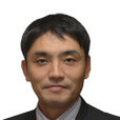China
China has been the first in and first out of Covid-19 and its economic impact. In the first quarter of last year, its growth was around -6.8%. In the same period this year, it recovered significantly to 18%, as it successfully contained the effects of the pandemic and launched stimulus measures. Some industries recovered better than others, such as exports, real estate, and financial and IT services, the latter benefiting from more people working from home.
In the second half of this year, there is likely to be downward pressure on growth. Pent-up demand in the hospitality sector could be short-lived. The export growth surge from last year is also unlikely to remain in place over the long term, especially for personal protective equipment and work-from-home related products, as Western economies contain the pandemic through their vaccination drives. Property investment growth seems to be nearing its peak soon, mainly because of authorities channeling financing away from the property sector and towards manufacturing and IT services. China’s developers spending less on land purchases will affect local government revenues, which in turn will slow fixed asset investment growth in infrastructure. Additionally, the rising cost of raw materials is likely to squeeze margins of manufacturers in the coming months. Chip shortages could also weigh on industrial production. And finally, rising default risks in northern China could slow growth in that region.
In sequential terms, China’s growth could peak at 2% in the second quarter, and then slow to around 1.3% in the second half of this year.
The People’s Bank of China (PBoC) is unlikely to tighten monetary and credit policies much further because surging raw material prices have already squeezed some manufacturers and builders. The PBoC also cannot use RMB appreciation as a tool to deal with the surging producer price index of inflation brought on by raw material supply issues.
Japan
Despite the recent slowdown in the increase of daily confirmed Covid-19 cases, Japan is still in its fourth wave of the pandemic. The government has consequently extended the country’s state of emergency until June 20. As a result, economic growth likely remains subdued, even in the second quarter of this year, following the -3.9% quarter-on-quarter growth in Q1 this year.
Another reason for Japan’s delayed economic recovery is the slow progress of vaccinations compared to other developed economies. If the pace of inoculation accelerates, the country could reach a state of herd immunity by the end of 2021. That pace in its vaccination program could hasten an economic recovery in Japan in the second half of this year.
The inflation momentum in the economy will, however, continue to be subdued as the real economic recovery has been slow. Elevated international commodity prices could drive inflation higher, but not high enough to raise underlying inflation level to Bank of Japan’s (BOJ) 2% goal.
The BOJ is expected to maintain its monetary easing and ultra-low interest rate conditions even for long and super-long maturities.
See the global economic outlook presentation on the Nomura Forum website (requires guest login)






